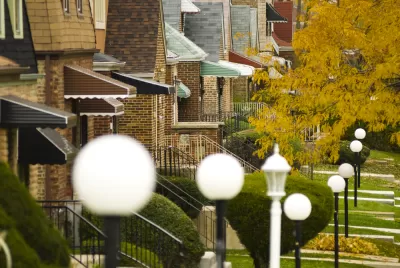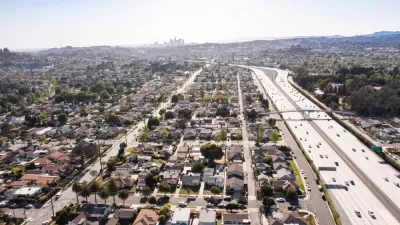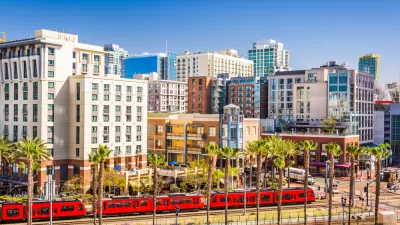Many suburban areas outside thriving urban cores are struggling to deliver vital services and maintain property values as job and population growth stagnates. It's time to confront the realities of those communities, according to this article.

"There’s been endless discussion on the impact of new residents in core cities, but we’re not talking enough about what’s happening in the suburbs and whether those peripheral areas are ready for the accelerating changes taking place there," writes Pete Saunders to begin a discussion about race and the suburbs. "Growing numbers of African-Americans, Latinos and Asians are finding new homes on the metro periphery -- contributing to the diversification of American suburbia but also to its difficult problems."
Saunders begins with south Cook County, in Illinois outside of Chicago, as an example of a diversifying suburban area that has experienced more of the "downsides of contemporary suburbia than the benefits":
Its residents were impacted heavily by manufacturing job loss, and the area was especially vulnerable to the run-up of subprime mortgages that helped cause the Great Recession. As a result, incomes and property values have stagnated. In 2017, the city of Chicago surpassed suburban south Cook overall in median household income for the first time since 1980. Median home values in south Cook remain about half as much as for the metro area.
As noted by Saunders, south Cook County is far from alone. Similar examples can be found in Maryland, Georgia, and Missouri, for instance. These communities will require a number of policy strategies to deal with the challenges of stagnant growth and property values.
FULL STORY: It's Time for Suburbs to Talk About Race

Planetizen Federal Action Tracker
A weekly monitor of how Trump’s orders and actions are impacting planners and planning in America.

San Francisco's School District Spent $105M To Build Affordable Housing for Teachers — And That's Just the Beginning
SFUSD joins a growing list of school districts using their land holdings to address housing affordability challenges faced by their own employees.

The Tiny, Adorable $7,000 Car Turning Japan Onto EVs
The single seat Mibot charges from a regular plug as quickly as an iPad, and is about half the price of an average EV.

Seattle's Plan for Adopting Driverless Cars
Equity, safety, accessibility and affordability are front of mind as the city prepares for robotaxis and other autonomous vehicles.

As Trump Phases Out FEMA, Is It Time to Flee the Floodplains?
With less federal funding available for disaster relief efforts, the need to relocate at-risk communities is more urgent than ever.

With Protected Lanes, 460% More People Commute by Bike
For those needing more ammo, more data proving what we already knew is here.
Urban Design for Planners 1: Software Tools
This six-course series explores essential urban design concepts using open source software and equips planners with the tools they need to participate fully in the urban design process.
Planning for Universal Design
Learn the tools for implementing Universal Design in planning regulations.
Smith Gee Studio
City of Charlotte
City of Camden Redevelopment Agency
City of Astoria
Transportation Research & Education Center (TREC) at Portland State University
US High Speed Rail Association
City of Camden Redevelopment Agency
Municipality of Princeton (NJ)





























